Exploring the top 10 beginner's guide to the OBV indicator unveils a structured approach to understanding this influential tool in trading. From unraveling the basics to deciphering intricate strategies, this guide equips traders with essential knowledge for leveraging the OBV indicator effectively.
As we dive into the intricacies of calculating, interpreting, and implementing this indicator, a wealth of insights awaits those eager to elevate their trading acumen. Let's embark on this journey together and unearth the power that the OBV indicator holds in shaping profitable trading decisions.
What Is OBV Indicator?
Developed by Joseph Granville in 1963, the On-Balance Volume (OBV) indicator is a technical analysis tool designed to monitor volume changes in relation to price movements for forecasting market trends. This indicator helps traders analyze the flow of volume in and out of a security.
By comparing the volume on up days to the volume on down days, OBV accumulates a running total. This cumulative total is then plotted on a graph, creating the OBV line. The direction of this line correlates with the direction of price movements, indicating the strength of buying or selling pressure.
Traders use OBV to confirm price trends, as divergences between OBV and price often precede potential reversals or continuations. As a leading indicator, OBV provides early signals for potential breakouts or changes in market trends.
Understanding the relationship between volume and price movements is essential for traders looking to make informed decisions in the market.
Calculating OBV Indicator
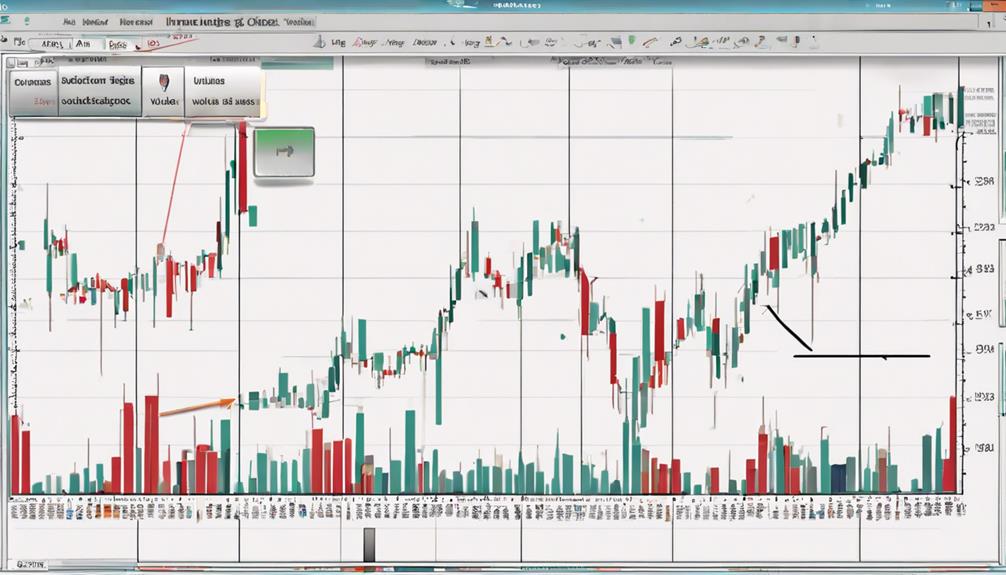
The calculation of the On-Balance Volume (OBV) indicator involves incorporating the current trading volume with the previous day's OBV in accordance with the direction of the closing price. If the closing price is higher than the previous day, the current trading volume is added to the previous day's OBV. Conversely, if the closing price is lower, the current trading volume is subtracted from the previous day's OBV. When the closing price remains unchanged, the OBV value remains the same as well.
These calculations result in cumulative OBV values, which reflect the buying and selling pressure based on volume and price movements. The OBV indicator is a dynamic tool that adjusts to price changes, providing insights into market sentiment and potential price trends. By following these calculations and understanding the cumulative nature of OBV values, traders can better interpret the movements in the market and make informed decisions based on OBV analysis.
Interpreting OBV Indicator
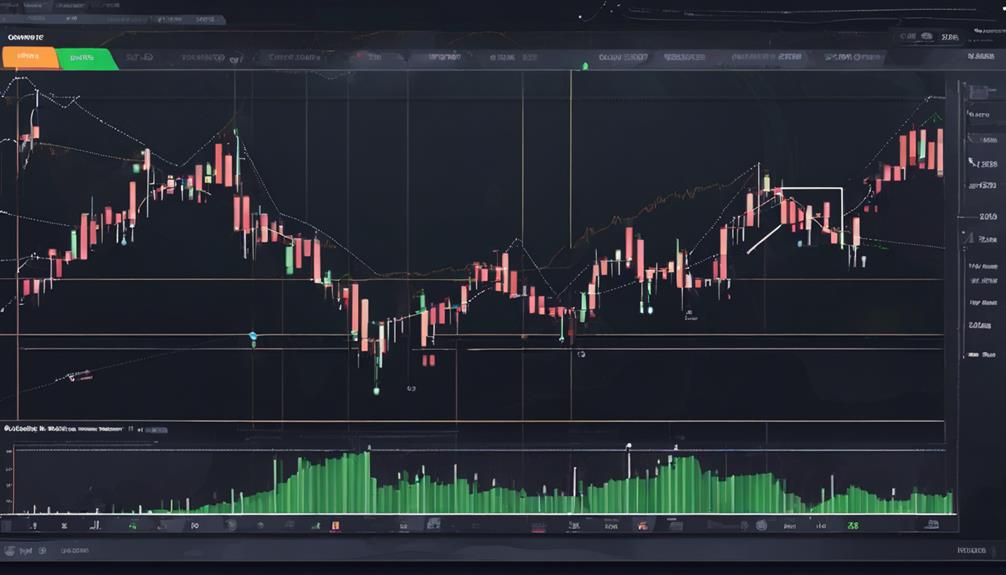
When interpreting the OBV Indicator, traders focus on analyzing the cumulative volume flow in relation to price movements to gauge market sentiment and potential price trends.
By observing how OBV values change with price movements, traders can assess the strength of buying or selling pressure in the market. Increasing OBV values confirming price increases suggest bullish momentum, while decreasing OBV values signaling potential price declines indicate bearish sentiment.
Divergence between OBV and price movements can be a powerful signal, hinting at potential reversals or the continuation of existing trends. It is crucial to interpret OBV accurately by looking at the relationship between volume changes and price movements.
This analysis helps traders anticipate potential shifts in market direction and make more informed trading decisions based on the underlying volume dynamics.
Plotting OBV Indicator
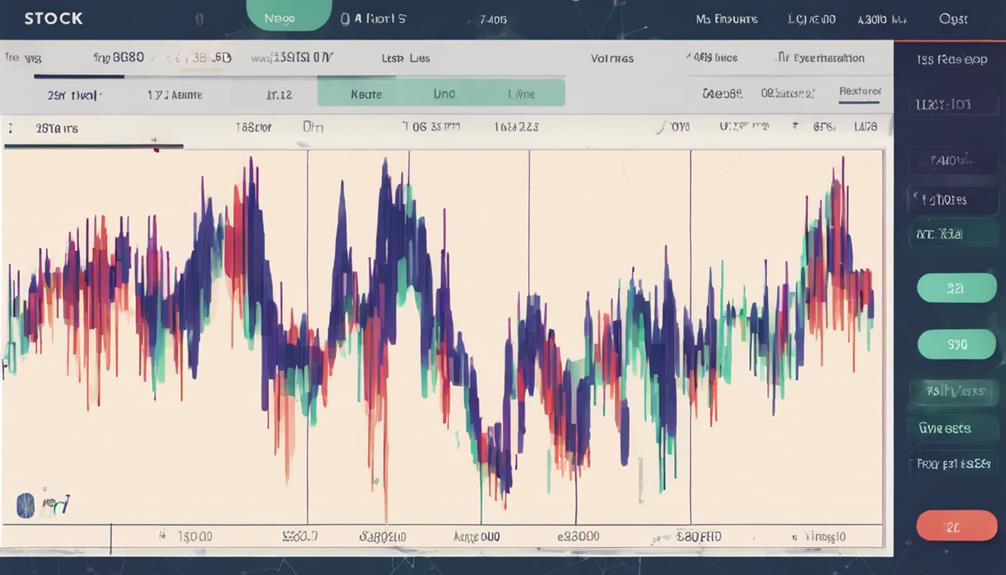
In practical application, plotting the OBV Indicator involves representing the cumulative volume flow as a line on the volume section of the chart.
- The OBV line visually interprets the cumulative volume flow based on price changes.
- Rising OBV values indicate positive volume flow, while falling values indicate negative volume flow.
- Traders analyze OBV line movements for divergence signals and trend confirmations.
- Understanding OBV plotting helps in interpreting volume dynamics in relation to price movements.
The OBV line's trajectory on the chart provides valuable insights into the interplay between volume dynamics and price movements. By observing how the OBV line moves in conjunction with price changes, traders can better understand the underlying forces driving market trends. This visual representation of volume flow assists in identifying potential trend reversals, confirming the strength of existing trends, and pinpointing potential entry or exit points in the market. Mastering the art of plotting the OBV indicator is essential for traders looking to leverage volume analysis in their decision-making process.
Using OBV for Divergence
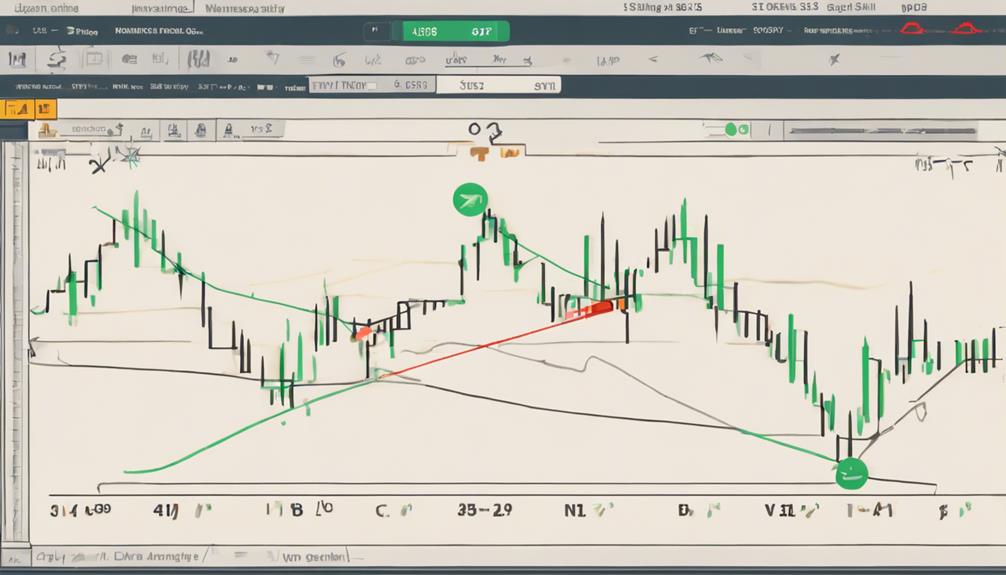
Utilizing OBV for identifying divergence patterns offers traders a strategic advantage in anticipating potential market reversals. Divergence in OBV occurs when the indicator moves counter to the price action, indicating a possible shift in the trend.
Bullish divergence in OBV is recognized when prices are decreasing while the OBV indicator is increasing, suggesting a potential upcoming uptrend. On the other hand, bearish divergence in OBV is observed when prices are rising while the OBV indicator is declining, hinting at a possible downtrend on the horizon.
Confirming Trends With OBV
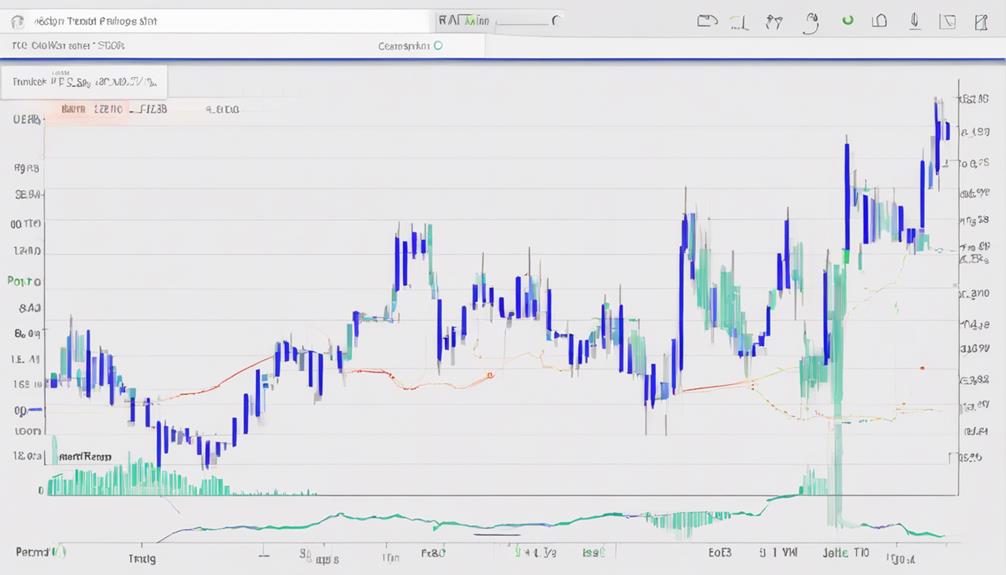
To ascertain the validity of market trends, traders rely on the On-Balance Volume (OBV) indicator to confirm the direction of price movements through analysis of volume dynamics. OBV plays a crucial role in confirming trends and providing insights into potential trend reversals. Here are key points to consider when confirming trends with OBV:
- Buying Pressure Confirmation: OBV confirms an uptrend when it rises alongside price increases, indicating strong buying pressure in the market.
- Selling Pressure Indication: In a downtrend, OBV declines in alignment with falling prices, signaling the presence of selling pressure.
- Trend Reversal Warning: Divergence between OBV and price movement can suggest a potential trend reversal, prompting traders to exercise caution.
- Strength Assessment: Traders use OBV to validate trend direction and assess the strength of the current trend based on volume dynamics.
Understanding these aspects of OBV empowers traders to make informed decisions and navigate market trends effectively.
OBV for Ranging Breakouts
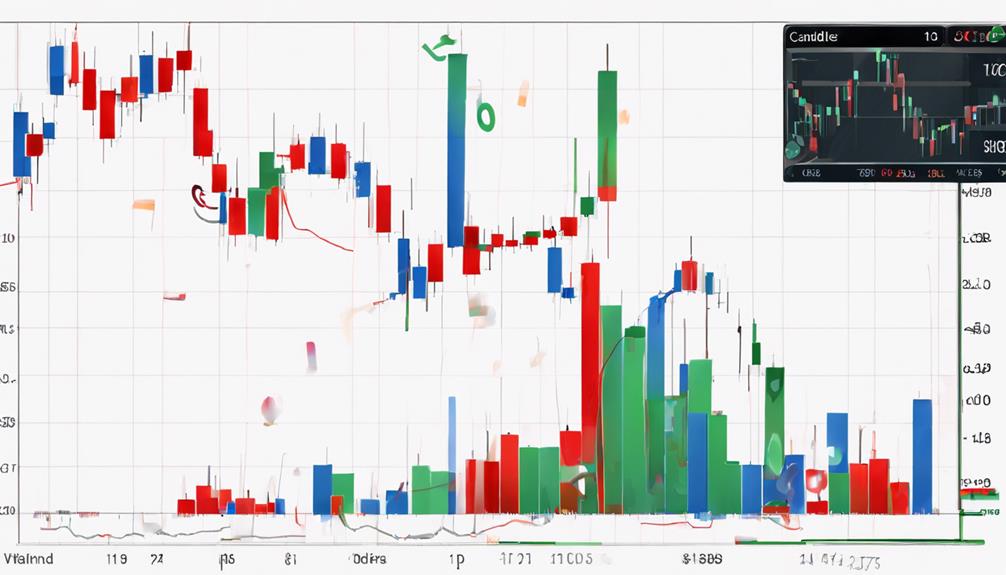
Analyzing volume dynamics in ranging markets using the On-Balance Volume (OBV) indicator helps traders identify potential breakout opportunities before they occur. In such scenarios, traders focus on volume changes within a specific price range to anticipate future price movements.
OBV in ranging breakouts can serve as a precursor to a new trend initiation or a continuation of the existing trend. Traders keen on utilizing OBV for ranging breakouts should pay attention to OBV divergence, a vital signal that can confirm breakout opportunities in sideways trading conditions. This strategy demands patience and a meticulous observation of both volume and price movements.
General Tips for OBV Indicator
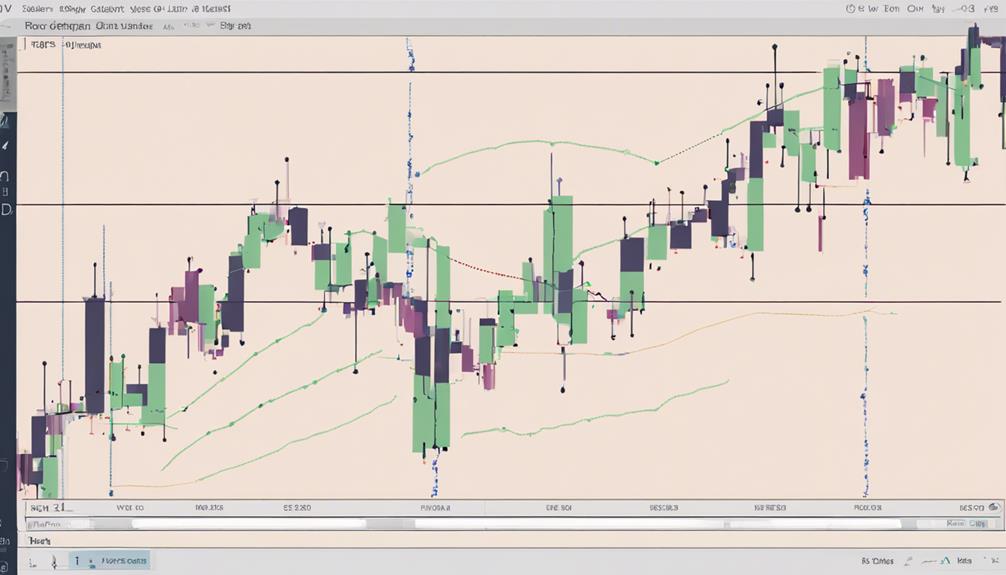
When considering the application of the OBV indicator, traders can benefit from adhering to general tips that enhance their understanding and utilization of this tool in analyzing market dynamics and potential trading opportunities.
- Volume Confirmation: Utilize OBV to confirm price movements by assessing whether volume aligns with the trend direction.
- Trend Identification: OBV can help identify trends by analyzing the relationship between volume and price changes over time.
- Divergence Recognition: Watch for divergences between OBV and price action as they can signal potential shifts in market dynamics.
- Breakout Opportunities: Use OBV to detect potential breakout opportunities by observing significant volume spikes accompanying price movements.
Advantages of OBV Indicator
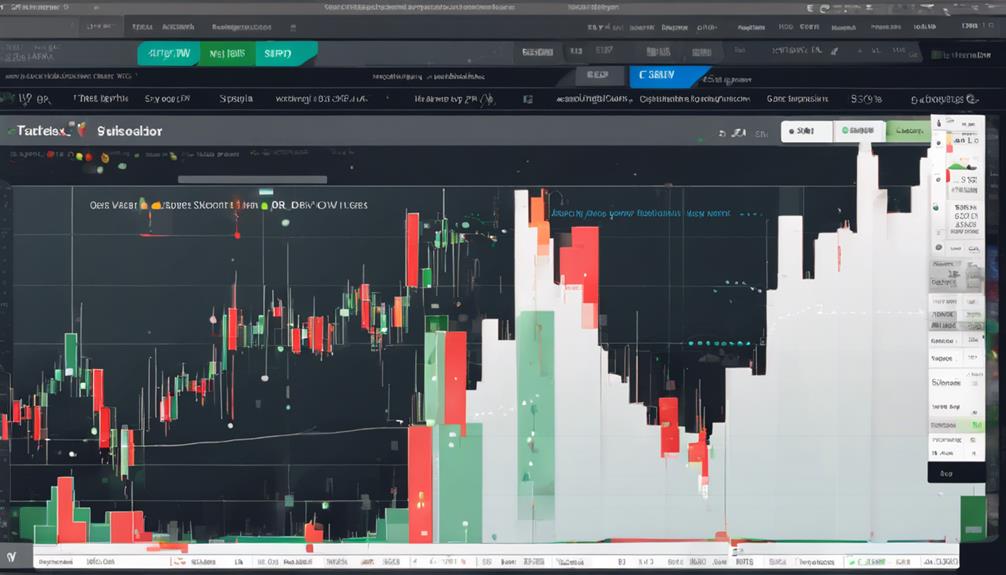
The OBV indicator offers traders a straightforward and efficient method for analyzing market trends. Its ability to provide diverse signals facilitates the identification of potential changes in market direction.
Additionally, the OBV indicator's early signals with minimal time lag can assist traders in making timely and informed decisions.
OBV Indicator Benefits
Utilizing the OBV indicator equips traders with a strategic edge by harnessing volume dynamics to forecast price movements effectively.
- Leading Indicator: OBV is a leading indicator in volume trading, offering insights into potential price trends before they occur.
- Trend Analysis: It provides clear signals for trend analysis, aiding beginners in grasping market dynamics easily.
- Simple to Use: The OBV indicator is user-friendly and widely utilized in technical analysis strategies, making it accessible for traders of all levels.
- Early Signals: OBV offers early signals with minimal time lag, enhancing its effectiveness for beginners in making informed trading decisions.
The OBV indicator's ability to interpret volume changes efficiently makes it a valuable tool for traders entering the market.
Importance of OBV
Significantly enhancing traders' analytical capabilities, the OBV indicator stands out as a pivotal tool in deciphering market trends and potential price movements. By analyzing volume changes alongside price fluctuations, OBV assists traders in identifying possible price movements. It offers early signals of trend reversals and breakouts, enabling informed trading decisions.
The indicator's straightforward calculation method adjusts based on price and volume shifts, providing accurate trend predictions. Moreover, OBV is valuable for confirming trends, detecting divergence between volume and price, and filtering out false signals. Traders frequently combine OBV with other indicators to boost its effectiveness in predicting market dynamics and trend changes.
This versatility makes OBV a crucial asset for traders seeking to navigate the complexities of the market.
Limitations of OBV Indicator
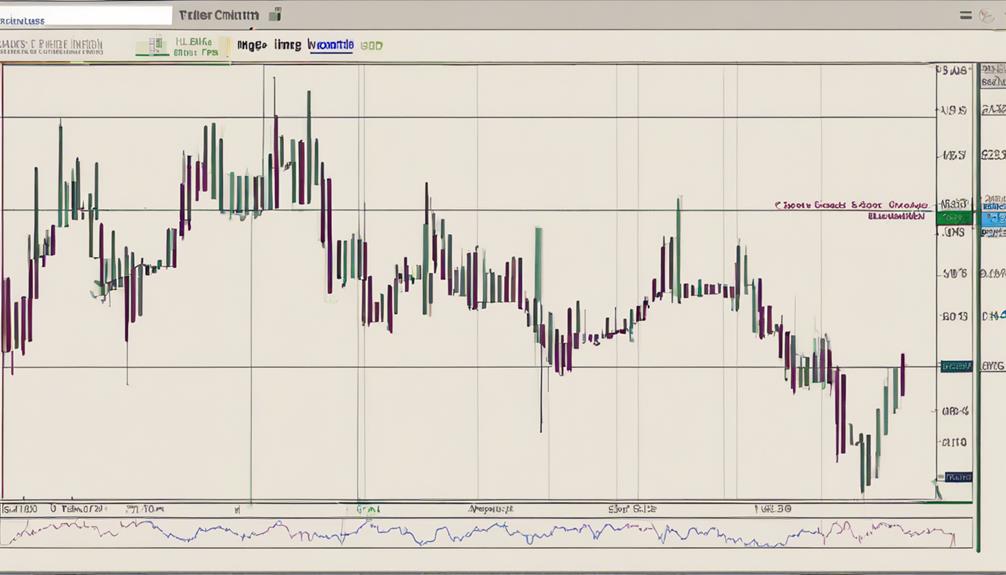
The limitations of the OBV indicator become apparent when faced with abrupt spikes in trading volume, potentially leading to false signals. Factors such as sudden volume surges can distort the indicator's accuracy, making it challenging to interpret signals correctly.
Traders should exercise caution and consider combining OBV with other indicators to mitigate these limitations and enhance the reliability of their trading decisions.
OBV Indicator Accuracy
When analyzing the accuracy of the OBV indicator, it is crucial to consider its limitations, particularly in situations of large volume spikes that can introduce false signals and distort its effectiveness.
- OBV is a leading indicator prone to false signals during large volume spikes that may distort accuracy.
- Combining OBV with lagging indicators like moving averages can confirm breakouts and enhance its effectiveness.
- Traders need to exercise caution when sudden volume spikes occur as they can impact the reliability of OBV predictions.
- False signals in OBV can be mitigated by using complementary tools and indicators for a more comprehensive market analysis.
Factors Affecting OBV
One potential factor affecting the OBV indicator's performance lies in the susceptibility of large volume spikes to distort its predictive accuracy, potentially leading to false signals. This is particularly crucial as OBV is a leading indicator that may produce misleading signals when faced with significant volume fluctuations.
To address this limitation, traders can consider combining OBV with lagging indicators like moving averages. By doing so, breakouts can be confirmed, and the effectiveness of OBV can be enhanced.
Traders should remain cautious during sudden volume spikes, as these events can impact the reliability of OBV signals. To improve overall market analysis and trading decisions, utilizing OBV in conjunction with other indicators is advisable.
Interpreting OBV Signals
In evaluating OBV signals, traders must be mindful of the inherent limitations of this indicator. Particularly, its susceptibility to generating false signals during periods of significant volume spikes.
- OBV signals can be prone to false signals during volume spikes
- Combining OBV with lagging indicators like moving averages can enhance its effectiveness
- Caution is advised when sudden volume spikes occur
- Using OBV in conjunction with other indicators can lead to more reliable trading decisions.
Understanding these limitations is crucial for traders to effectively interpret OBV signals amidst market volatility and make informed trading choices.
Can the OBV Indicator be Used by Beginners, or is it More Suitable for Advanced Traders?
The OBV indicator can be a valuable tool for traders of all levels. Beginners can benefit from utilizing the OBV indicator as it provides clear signals for buying and selling. Advanced traders can also find value in using the OBV indicator to confirm trends and identify potential reversals in the market.
Frequently Asked Questions
What Is the Best Time Frame for OBV Indicator?
The best time frame for the OBV indicator varies based on trading style and strategy. For longer-term trends and clearer market sentiment, daily charts are preferred. Intraday traders may opt for shorter time frames like 1-hour or 15-minute charts.
How Do I Use OBV Indicator?
To use the OBV indicator effectively, monitor volume changes relative to price movements. Look for divergences between OBV and price for potential shifts. Use OBV as a leading indicator to identify breakouts early. Add OBV in MetaTrader 4 via Insert – Indicators – Volumes – On-Balance Volume menu.
How Reliable Is the OBV Indicator?
The reliability of the OBV indicator stems from its ability to gauge price movements through volume analysis. When used in conjunction with other technical indicators, OBV enhances trend identification and reversal signals. Can OBV alone drive successful trading decisions?
What Is the OBV Breakout Strategy?
The OBV breakout strategy involves utilizing On-Balance Volume (OBV) to validate price breakouts by aligning volume surges with price movements. Traders employ this method to confirm breakout signals and assess the strength of potential price shifts.
Conclusion
In conclusion, the OBV indicator offers valuable insights into market trends and potential price movements, making it a powerful tool for traders.
By understanding how to calculate, interpret, and apply the OBV indicator effectively, traders can enhance their trading decisions and improve their overall performance.
Despite its limitations, the OBV indicator remains a popular choice among traders for its ability to identify buying and selling pressure in the market.
